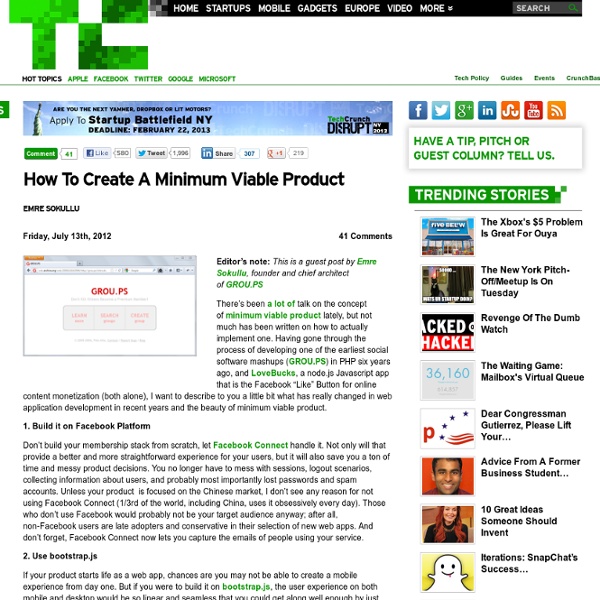How To Create A Minimum Viable Product

How much recurring income do you generate, and from what
Haha, fair question. I'm really really proficient in Java. I used to teach it in school, I've done it professionally, etc. But it really breaks down when I get to the Android gui+os-specific things. Of course, all of the information is there, and perhaps it's worth reading all of it, one page at a time, in order become a proficient android programmer. It looks like the documentation has gotten much, much better over the past couple of years, so maybe you've inspired me to give it a fair shake.
Podcast Ep. 2 with Amy Hoy: Pricing, Products, And Passion
Keith and I recorded the second podcast, this time with special guest Amy Hoy. (If you missed the first podcast, see here.) We’re still searching for a format which really works for us, so this is a work in progress. Please share your thoughts with us on what you like/don’t like about it. This podcast was recorded two months ago, largely because Keith and I got too busy to do the editing and post it. Major topics for this podcast included: why businesses are not price sensitive and how to price SaaS directed at themhow bootstrapping product businesses with a side of consulting worked outthe psychology of happiness Download Links Podcast link (MP3, 23 MB, approximately 80 minutes.) Subscribe in iTunes &tc: The feed technically includes all posts on this blog, but if you put it into iTunes or your iDevice, it will slurp in only the audio posts. Transcript Patrick: Okey-dokey. Amy: Yeah. Keith: Alright. Patrick: We don’t have intro music. [laughter] Amy: Hello.
A/B Testing Tool | Split Testing and Multivariate Testing Software - Visual Website Optimizer
What I Learned From Increasing My Prices
Sharebar Last month Bidsketch had the biggest increase in revenue it’s ever had. Before that, the biggest increase in revenue came when FreshBooks emailed a million people and mentioned Bidsketch as a new integration. I got so many new sales notifications that day, I thought someone had hacked my server. It was nuts. Last month’s increase in revenue was double that one. Conversions and traffic didn’t increase, though. It was a long process and took a lot of work but it’s one of the best things I’ve done since launching Bidsketch. Note: To help me out with these changes I read The Strategy and Tactics of Pricing and enlisted the help of Chris Hopf. The problem with my old plans… When I first launched Bidsketch I experimented by raising my prices for new signups until I found the most profitable price point. Unfortunately, those pricing experiments took place with weak messaging and badly designed plans. This is what I had before the change: Problem #1: Plan names. Problem #3: Plan limits.
Double Your Freelancing Rate in 14 Days
4 ways to keep your startup out of legal trouble
I used to work as a startup attorney and now I’ve co-founded a startup that in part helps entrepreneurs get legal services, so I’ve seen startups make a lot of legal mistakes over the years, and there are a few that I keep seeing repeated. These mistakes are almost always the result of a simple failure in common sense; I’ve seen entrepreneurs of all pedigrees make them. Here are the top four: Mistake 1: Not having every founder sign up to a vesting schedule and an intellectual property assignment agreement. If a founder leaves early on, it is a sour note when the remaining team continues to pour their soul into the company while the departing founder holds a large ownership stake. Another sore point, and potentially fatal result of a departing founder, is when founders leave with important intellectual property assets of the company. Mistake 2: Signing agreements without fully understanding the consequences of key clauses. Every business relationship should have a contract.
Related:
Related:



